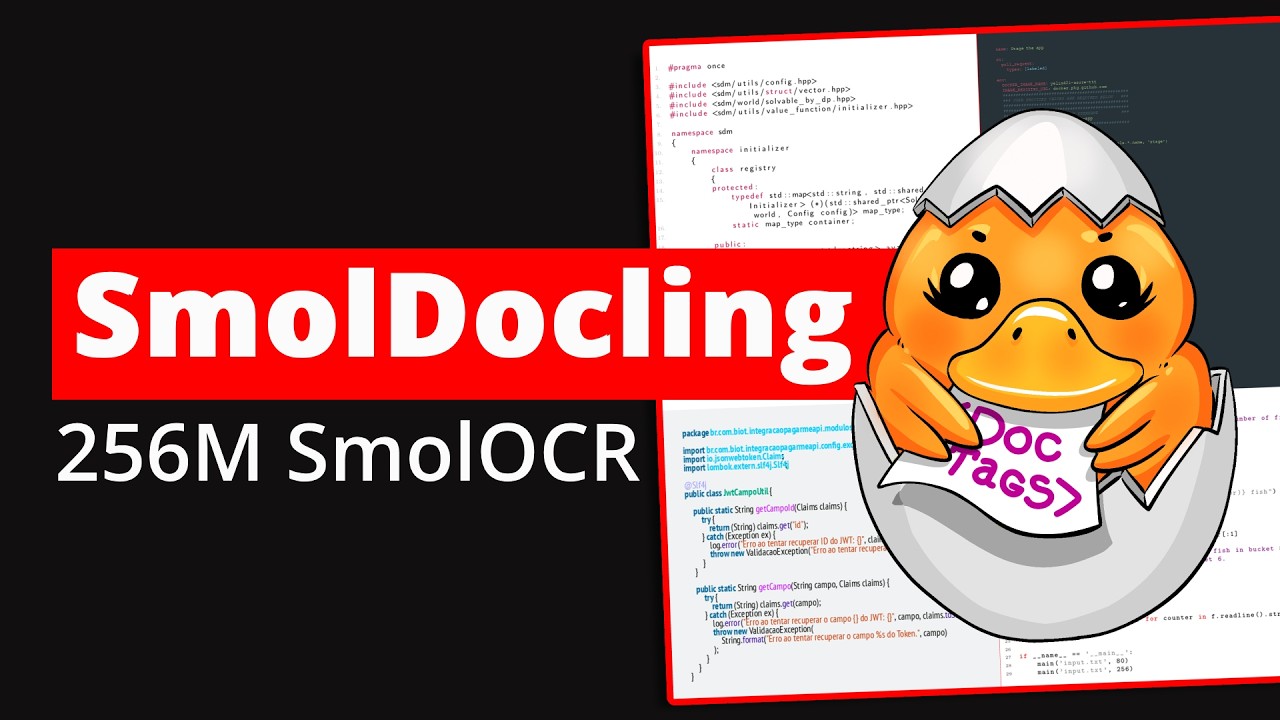The video introduces SmolDocling, a new OCR model developed by Hugging Face and IBM, designed for document understanding with only 256 million parameters, making it suitable for GPUs with limited VRAM. While it outperforms some competitors in specific tests, its true strength lies in its fine-tuning capabilities for specialized tasks, offering a structured output that can enhance personalized document processing workflows.
The video discusses the introduction of a new OCR model called SmolDocling, developed by Hugging Face in collaboration with IBM. This model is part of Hugging Face’s initiative to create smaller models, typically around 1 billion parameters or less, and specifically focuses on document understanding rather than just optical character recognition (OCR). With only 256 million parameters, SmolDocling is designed to run on GPUs with limited VRAM, although the presenter notes that a GPU is still necessary for effective operation.
The video highlights the model’s capabilities beyond traditional OCR, emphasizing its role in document conversion and understanding. The creators claim that SmolDocling outperforms competing models by up to 27 times, although the presenter points out that the comparison does not include some well-known models like M LCR or proprietary models such as Gemini and OpenAI’s offerings. This suggests that while SmolDocling is impressive, its performance should be contextualized within the specific models it was tested against.
The architecture of SmolDocling is based on a combination of a vision encoder and a language model, which together facilitate the extraction of various document elements, including text, images, tables, and more. The model outputs a structured format that resembles HTML, providing detailed information about the location and type of each element on the page. This structured output can be further processed by other models, such as large language models (LLMs), to refine the extracted data.
The presenter demonstrates the model’s functionality using various examples, showcasing its ability to handle different document types, including charts and code blocks. While the initial outputs appear promising, the presenter notes some limitations, such as occasional errors in processing. The real strength of SmolDocling lies in its potential for fine-tuning, allowing users to adapt the model for specific tasks by creating labeled datasets tailored to their needs.
In conclusion, while SmolDocling may not replace established OCR models for general tasks, it offers a unique solution for document extraction and conversion, particularly for specialized applications. The small size of the model makes it accessible for fine-tuning, which could enhance its performance for specific use cases. The video encourages viewers to explore the model and share their experiences, highlighting the potential for SmolDocling to contribute to personalized document processing workflows.
